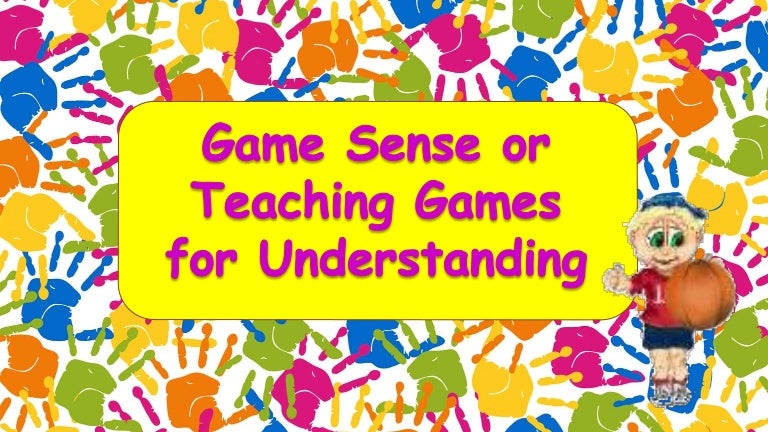- Referencesteaching Games For Understanding Strategies
- Referencesteaching Games For Understanding Students
- Referencesteaching Games For Understanding Kids
It refers to the importance of kindness, gentleness and a strong character that is slow to anger. Teach your child to be kind and gentle with art, craft and other activities that reinforces the value of meekness. Cornucopia of Kindness. Create a cornucopia of kindness and hang it on your child's bedroom wall as a constant reminder of the gentle. Teaching Games for Understanding is an approach to physical education developed by Peter Werner, David Bunker, and Rod Thorpe, and was adopted in the year 2002 by a group of representatives, associations and individuals from all around the world. It is a global agenda for scholarly inquiry in the field of teaching with the help of games. Teaching Games for Understanding(TGfU) in Primary and Secondary Physical Education. Paper presented at ICHPERSD International Conference for Health, Physical Education Recreation, Sport and Dance, 1st Oceanic Congress Wellington, New Zealand.
Teaching games for understanding (TGfU) is a dynamic approach to sport education that has gained worldwide popularity over the past 25 years. Now, through Teaching Games for Understanding: Theory, Research, and Practice, readers can discover the latest refinements and up-to-date research from the world's highest-regarded experts on the topic. Activities for up to 10-15 minutes at a time. 14 Exploring the Topic Day 1 Large Group p. 15 Exploring the Topic Day 1 Large-Group Roundup p. 15 Exploring the Topic Day 1 Choice Time p. 15 Exploring the Topic Day 1 Read-Aloud p. 16 Exploring the Topic Day 2 Choice Time p. 16 Exploring the Topic Day 2 Large Group.
and is replicated here as part of the SERC Pedagogic Service.
Summary
Hobson's choice is a game about homelessness and how difficult it is to get off the streets and leave the situation of homelessness. The game is text based and gives students opportunities to make choices that an average homeless person would have to make. There are several outcomes and possibilities that are possible. It allows students to see their current situation, gives them realistic choices to try to solve the situation, and then tracks all their decisions in the game.
Learning Goals
After completing this simulation the learner should be able to:- Define what is meant by the term Hobson's Choice.
- Explain some of the challenges faced by people facing homelessness.
- Compare and contrast individual and structural causes of homelessness.

Context for Use
Description and Teaching Materials
See link to simulation in resources below.
Teaching Notes and Tips

Assessment
Referencesteaching Games For Understanding Strategies
References and Resources
Hobson's Choice Simulation
Resource on Homelessness:
National Homeless Data and Resources
This is the website and organization that developed the simulation:
Developers of the Simulation
If you’re interested in learning more about the Teaching Games for Understanding model, check out this video that I created with the help of Kelly Ann Parry and Mike Cicchillitti.

Stages of Teaching Games for Understanding:
1. Game Form
Referencesteaching Games For Understanding Students
The game is introduced. The game form has been modified to represent the advanced form of the game and to meet the developmental level of the learner.
2. Game Appreciation
Epson scanner installation software. Students develop an understanding of the primary and secondary rules of the game as well as any modifications/variations applied to the game being played.
Referencesteaching Games For Understanding Kids
3. Tactical Awareness
With the help of questions, comments and game modifications from the teacher, students begin to work through the principles of play and identify key tactics and strategies that can lead to success in the game.
4. Decision Making
The teacher engages students in tactical talk to help them reflect on their decision making in the game.
5. Skill Execution
The teacher modifies the game to put an emphasis on skills that students identified as being essential to success.
6. Performance
The teacher observes the outcome of the students’ learning through the game by paying attention not only to the efficiency of the technique, but also the appropriateness of the response.
To learn more about the TGfU model, be sure to check out “Teaching Games for Understanding” by Linda Griffin and Joy Butler. Also, make sure you connect with the awesome Kelly Ann Parry!
Thanks for reading/watching and happy teaching!

The Striking & Fielding Games Teacher Pack
November 23, 2020
